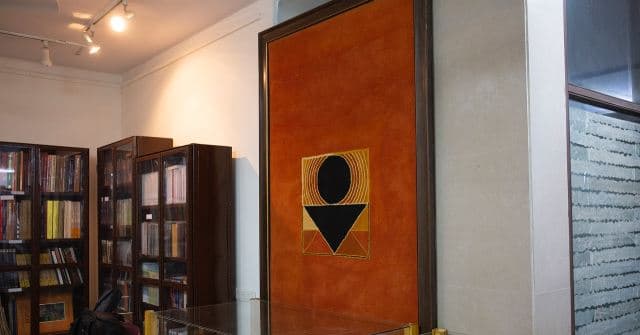A meditative quality fills the senses as one steps into Raza's creative sanctuary in Delhi. Walls of art adorn each corridor, doorway, and room, giving one a glimpse inside the artist's mind. The leitmotif of Bindu in Raza's art looks out from all his canvases. While old photographs and a typewriter tell stories from another time. This studio is an exhibition of Raza's intimate world as an artist and a dreamer.

S.H. Raza was one of India's most important 20th-century painters famed for his mastery of colour and his works in Abstract Expressionism and Geometric Abstraction. A co-founder of India's most radical art movement (Progressive Artists' Group), Raza's early works in Mumbai comprise watercolours of its bustling streets and corners. Most of his paintings demonstrate Raza's clinging memory of his childhood; being the fear and fascination of Indian forests. Where he describes nights in the woods as "hallucinating" while during the day his village in Madhya Pradesh would transform into a "fairyland of colours."

Raza was trained at the distinguished Sir J.J. School of Art in Mumbai. His strong desire for Indian paintings to stay in tandem with European trends led him to form the PAG with masters such as F.N. Souza, K.H. Ara, and M.F. Husain. In 1950, Raza accepted a painting scholarship at the École Nationale Supérieure des Beaux-Arts in Paris and lived there for the next 60 years.
Raza's work in the mid-1950s to mid-1960s was dominated by French landscape scenes, set apart by gestural brushstrokes and an impasto application of paint. Van Gogh and Gauguin's works inspired him to use colour as a tool of construction.
In search of a new artistic direction, Raza revisited his homeland for inspiration. His frequent visits to India sparked his fascination with its historic texts. This resulted in him venturing upon the Bindu as a motif. A circle that emerged as a regular element in his paintings. His paintings in the 1970s brought his artistic path to a full circle as he included significant elements of his childhood in India and his cultural heritage. In fact, his longing to come back home was also reflected in his paintings. The bottom of one of his canvases found in his Delhi studio read in the Devnagari script, Ma Laut Kar Jab Aunga Toh Kya Launga?